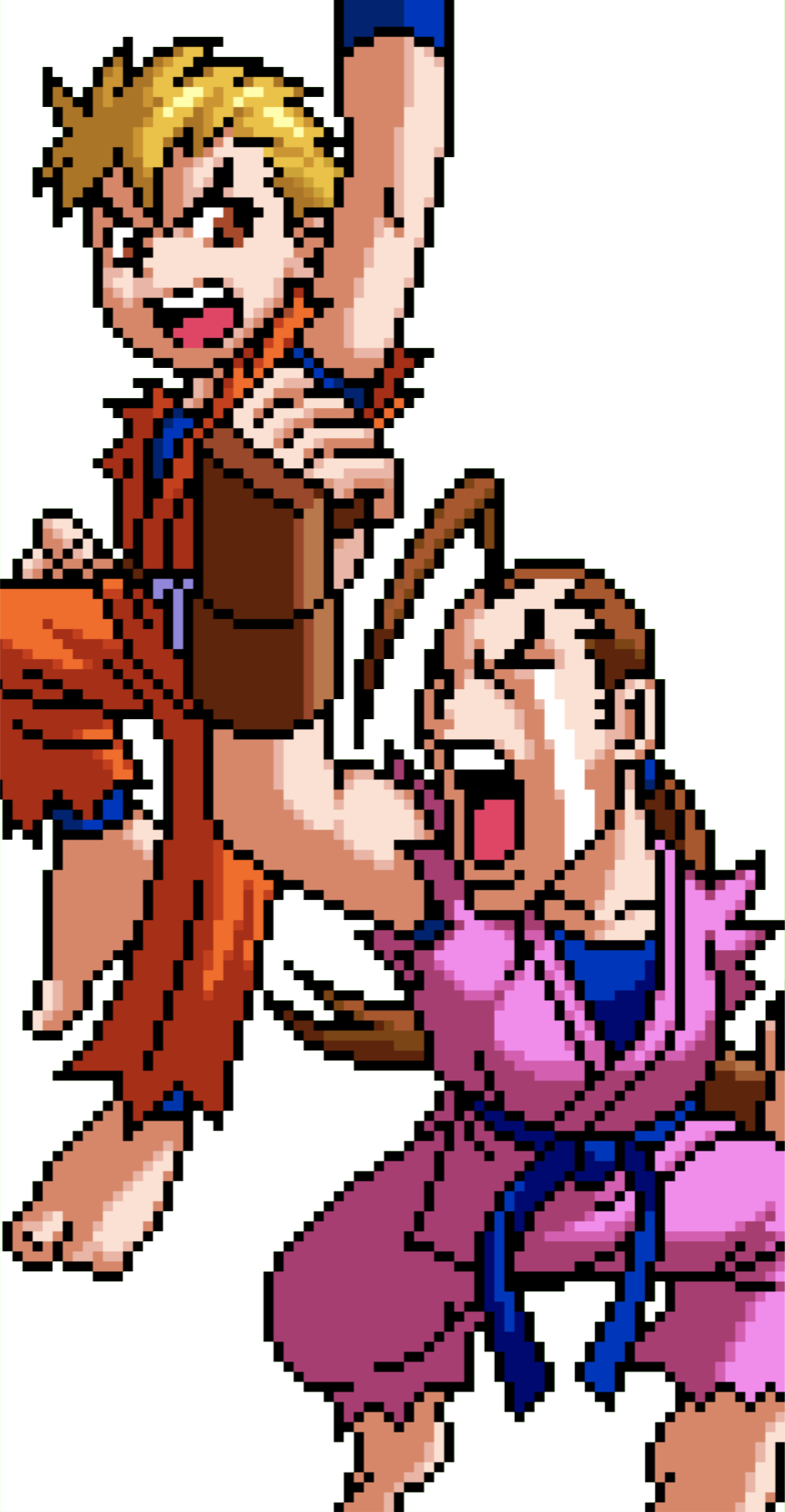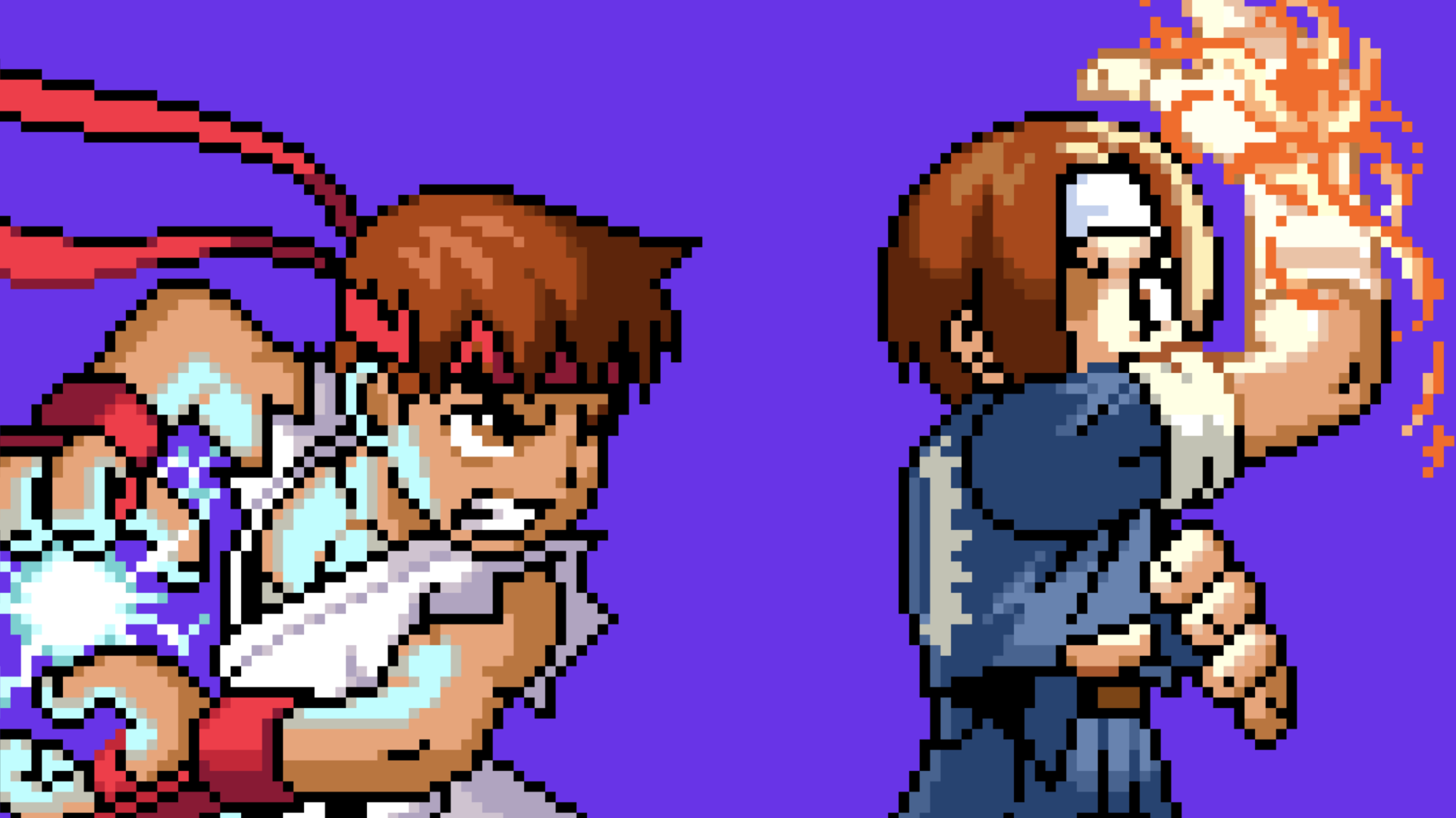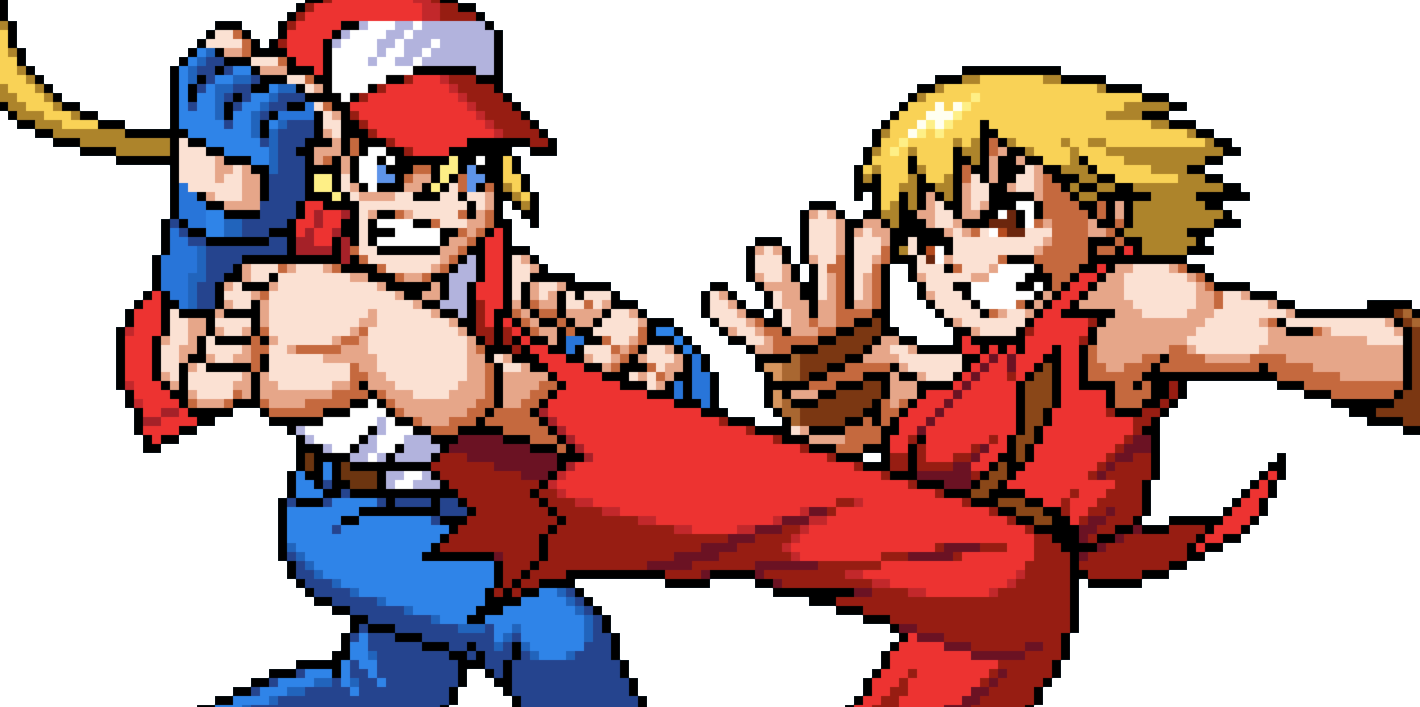How a Small Portable Fighter Forever Changed Gaming’s Biggest Rivalries
By 1999, video game crossovers weren’t an alien idea, especially in the fighting game genre. Five years prior, SNK had released The King of Fighters ‘94, a new team-based fighter that featured a mix of characters from the company’s popular franchises such as Fatal Fury, Art of Fighting, and Ikari Warriors. Then, in 1996, Japanese arcades would get X-Men vs. Street Fighter, where Capcom had its beloved brawlers like Ryu, Ken, and Chun-Li battle against the Marvel heroes it’d previously featured in X-Men: Children of the Atom and Marvel Super Heroes.
There was, however, still a very taboo idea in the world of crossover games in that era: rival versus rival. SNK’s characters may be rivals on a narrative level, but not a business one. Capcom and Marvel were two separate companies, but ones from different industries that never competed with one another.
At that point in time, competition between gaming companies was definitely common. Sega and Namco had a long back-and-forth competition in arcades around the world, while at home, Sega versus Nintendo was the biggest question of loyalty many children faced when it came to consoles. The war between SNK and Capcom, however, always felt extra special to me. Beyond hardware, or single games, the feud between those two was on a genre level. The pair of Osaka-based developers were both masters in crafting 2D sprite-based fighters, and their rivalry got surprisingly personal at times. The original game in SNK’s Samurai Shodown series came to exist in part thanks to ex-Capcom staffers who used the knowledge they’d gained from working on Street Fighter II. A few years later, Street Fighter Alpha would introduce the character of Dan Hibiki, a cocky-yet-ineffective martial artist who existed specifically to poke fun at SNK mainstays like Ryo, Robert, and Yuri.
As someone who loved fighting games of all types, Capcom and SNK were two companies near and dear to me. My heart always belonged to SNK at the end of the day, but both publishers were major factors in my gaming life, as were their fighting games and the characters that filled out their rosters. In those moments when I allowed myself to dream the most daring of dreams, I imagined a fighting game where members from each side could duke it out together. Sadly, such things were impossible. Rival game companies almost never worked together on anything (rare exceptions like Chrono Triggeraside), let alone a game where representatives from each would end up sharing the same stage together. There would be no Sonic vs. Mario. No Sega vs. Namco. And especially no SNK vs. Capcom. That dream would simply never exist.
Until, in 1999, it finally did.
I still remember where I was when I found out that there would be a game bringing together the worlds of SNK and Capcom. It’s impossible for me to fully emphasize just how utterly shocking of an announcement that was at the time, or how big the rivalry between those two companies had grown. When Mario and Sonic would finally happen years later, that crossover seemed crazy as someone who’d lived through the bitter battles between Nintendo and Sega, but also kinda inevitable. SNK and Capcom coming together, on the other hand, just defied all logic.
Possibly even more illogical—especially to my modern self—is that one of the biggest events to happen in video games up to that point would kick off with a fighting game developed for a low-powered, two-button handheld.
Now, to be fair, that isn’t exactly where the SNK vs. Capcom saga starts. Instead, the very first game to come from the deal between the two was SNK vs. Capcom: Card Fighters Clash, a digital card battle game released for the NeoGeo Pocket Color. Taking a cue from the Pokémon games, Card Fighters Clash came in two versions, “SNK” and “Capcom,” with each offering different starter decks and their own unique sets of exclusive cards. While it wasn’t really the game we fans wanted as the start of the epic battle between the two companies, Card Fighters Clash was surprisingly fantastic, and actually ended up serving as a satisfying appetizer before the main course.
Looking back on what was to transpire, the clear winner in the clash between the two companies was Capcom. Its two projects, Capcom vs. SNK and Capcom vs. SNK 2, were by far the better fighting games. SNK would finally make its own crossover fighter for the NeoGeo in 2003, SNK vs. Capcom: SVC Chaos, but it was a rushed project released to fulfill contractual obligations as the developer battled with its financial woes. However, it was the second project released for the Neo Geo Pocket Color, SNK vs. Capcom: The Match of the Millennium, that would truly serve as the initial fulfillment of a dream that had been years in the making.
This week, SNK re-released SNK vs. Capcom: The Match of the Millennium as part of its initiative to bring NeoGeo Pocket Color games to the Nintendo Switch, and playing the game again has been an interesting experience. To say that the first true fighting game match-up between the two companies being a handheld title was a disappointment would be an understatement. And yet, it ended up a game that punched (and kicked) way above its weight. Despite running on hardware that “boasted” a 6.144MHz CPU, 2.7” 160×152 display, and only two action buttons, The Match of the Millennium was a surprisingly robust and complex fighter. SNK had chosen to make the game to help promote the upgraded color model of its one-year-old NeoGeo Pocket, and it was evident how much effort had gone into that goal.
Even now, twenty-some years removed from its release, SNK vs. Capcom: The Match of the Millenniumstill impresses me. I was quickly reminded of just how much the dev team had accomplished under such limitations, and the game is still legitimately fun as a fighting game, and not just as a gimmick. Even as four-color sprites with trimmed-down movesets, the 26 characters here actually feel like their big-screen counterparts. Know how to play Guile in Street Fighter Alpha 3, or Mai Shiranui in The King of Fighters ‘99? You’ll know how to play them here, although you can tweak their playstyle through three selectable “style” choices (similar to what Capcom would go on to do in its own games). You can jump into fights solo, as a duo under tag rules, or as a three-man team a la KOF, where you need to defeat all of your opponent’s characters individually to win. Gameplay is smooth and responsive, the backgrounds surprisingly detailed and colorful for a portable game of that era, and the soundtrack overflows with classic themes from both companies.
 I’ve watched SNK’s “NeoGeo Pocket Color Selection” efforts on the Switch with nostalgic but amused curiosity. As much as I loved the company’s numerous handheld fighting games, they were a product of their time, experiences that I wasn’t really sure I needed to—or should—go back to. SNK vs. Capcom: The Match of the Millennium, however, has struck a different chord with me as I’ve been playing it. Part of it is that Match of the Millennium is arguably the best of the company’s output in the genre on the NeoGeo Pocket, but another part is remembering how much the game meant to so many of us when it came out. Even as we live in an era when epic gaming crossovers like Super Smash Bros. Ultimate can exist without needing to make a deal with the devil, all of the emotions a younger me felt as she saw her favorite fighting game worlds colliding still exist deep within my heart. Match of the Millennium was—and still is—an impressive feat of video game development, but it’s also an important piece of history that’s worth remembering.
I’ve watched SNK’s “NeoGeo Pocket Color Selection” efforts on the Switch with nostalgic but amused curiosity. As much as I loved the company’s numerous handheld fighting games, they were a product of their time, experiences that I wasn’t really sure I needed to—or should—go back to. SNK vs. Capcom: The Match of the Millennium, however, has struck a different chord with me as I’ve been playing it. Part of it is that Match of the Millennium is arguably the best of the company’s output in the genre on the NeoGeo Pocket, but another part is remembering how much the game meant to so many of us when it came out. Even as we live in an era when epic gaming crossovers like Super Smash Bros. Ultimate can exist without needing to make a deal with the devil, all of the emotions a younger me felt as she saw her favorite fighting game worlds colliding still exist deep within my heart. Match of the Millennium was—and still is—an impressive feat of video game development, but it’s also an important piece of history that’s worth remembering.
Unfortunately, I think that’s also why the game will be harder to appreciate for younger audiences. For those who weren’t around when the world changed, all they’ve ever known is a post-change world. Games that pit SNK against Capcom have always existed for them, and that’s if they even care about what’s becoming an increasingly older rivalry by the day. For them, SNK vs. Capcom: The Match of the Millennium might simply be an obscure, outdated curiosity from a bygone era—one that also doesn’t play nearly as well on the the Switch’s analog and digital control options compared to the glory that was the NeoGeo Pocket’s clicky stick.
I think it’s actually going to be the rivalry’s first official representation, SNK vs. Capcom: Card Fighters Clash, that will be able to win over the most current-era fans when it comes to these NeoGeo Pocket Color revivals. It’s low-tech nature won’t matter nearly as much given its gameplay style, and it’s the kind of experience where newer releases don’t threaten to instantly make it feel obsolete (like you can have with fighting games).
Still, I’m really glad that SNK vs. Capcom: The Match of the Millennium exists again in a way that more people can legally get a hold of, and I hope that those who love delving into the history of gaming will give it a try. It remains a fantastic fighting game if you’re willing to look past its limitations—but, more than that, it also stands as a symbol that dreams really can come true.



